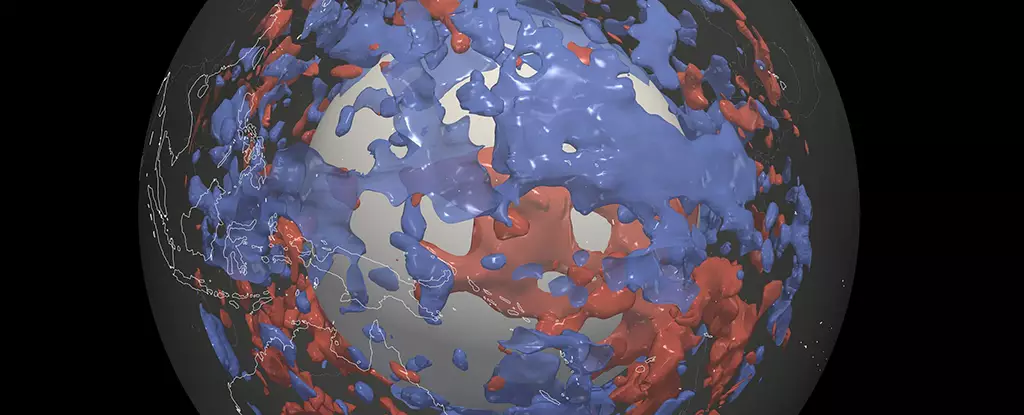The investigation of Earth’s internal structure has long captivated scientists and researchers. Among the most powerful tools available to unveil these subterranean secrets are seismic waves—energy waves that propagate through the Earth as a result of geological activity such as earthquakes. They have become instrumental in painting a clearer picture of our planet’s internal layers, much like a sophisticated imaging procedure that reveals a detailed anatomical model. A collaborative research team from ETH Zurich and the California Institute of Technology has recently made groundbreaking discoveries using these seismic signals, challenging previously held beliefs about the location and composition of Earth’s tectonic materials.
Scientists have employed seismic waves to map the Earth’s underground landscape for over a century, leveraging technology to interpret how these waves travel at varying speeds through different materials. This phenomenon occurs thanks to the diversity of the Earth’s internal composition; seismic waves can move rapidly through solid rock but may slow down or reflect entirely when encountering other densities and compositions. Historically, the analysis of these waves has been confined due to computational limits, often prioritizing a limited spectrum of seismic wave types. However, recent advancements in computer processing power, exemplified by the use of the Piz Daint supercomputer, have allowed researchers to achieve deeper insights by examining a vast array of earthquake waves.
Through their groundbreaking work, ETH Zurich and Caltech scientists uncovered intriguing remnants of Earth’s tectonic plates lurking in unexpected locations. Their comprehensive analyses revealed substantial fragments of rock within the lower mantle—significantly denser and cooler than the surrounding materials. These findings pose several unanswered questions regarding the dynamics of tectonic plate subduction—a process that typically involves the sinking and eventual fusion of surface plates into the mantle. Geophysical norms suggest that these remnants should not be found far from established subduction zones, leading to a significant realization that such geological formations may be more ubiquitous than previously presumed.
For instance, under the western Pacific Ocean, the high-resolution model produced by the researchers highlights formations that defy conventional expectations of plate subduction processes. Thomas Schouten, an Earth scientist involved in the investigation, proposes that the origins of these enigmatic masses could be diverse, further complicating the narrative. It raises the question of whether these structures are ancient materials that have withstood millennia of mantle convection or whether they represent accumulations of iron-rich rocks forged through long-term geological interactions.
The implications of these discoveries are profound, suggesting that our understanding of Earth’s geology may require a reassessment. Seismic waves provide a singular perspective—primarily the velocities at which they traverse the interior—but they may not encapsulate the complexities within. Schouten cautions that a more holistic approach is necessary, one that delves deeper into comprehending the material properties contributing to the varying wave speeds recorded.
For instance, the specific formations detected beneath the Pacific could point to remnants shed from the base of the tectonic plates due to prolonged geological activity. Interestingly, this challenges the existing framework of geological evolution, especially regarding plate thickness and composition near the Earth’s surface.
In light of these findings, the scientific community must pursue further investigations to decode the stories embedded within these mysterious chunks. Understanding what they are composed of and the processes that led to their current locations will require sophisticated geophysical modeling and material analysis. The research not only broadens the scope of seismic wave studies but also highlights the need for interdisciplinary collaboration in unraveling Earth’s complex geological history.
The journey into the depths of our planet is a testament to the power of curiosity and innovation in science. With modern technology at our fingertips, we are well-positioned to explore these mysteries and discover what lies beneath our feet—not just for academic fulfillment but for the continued understanding of our Earth and the forces that shape it. As we embark on this exploration, each seismic signal may tell us a story, one that brings us closer to the very essence of our planet.

